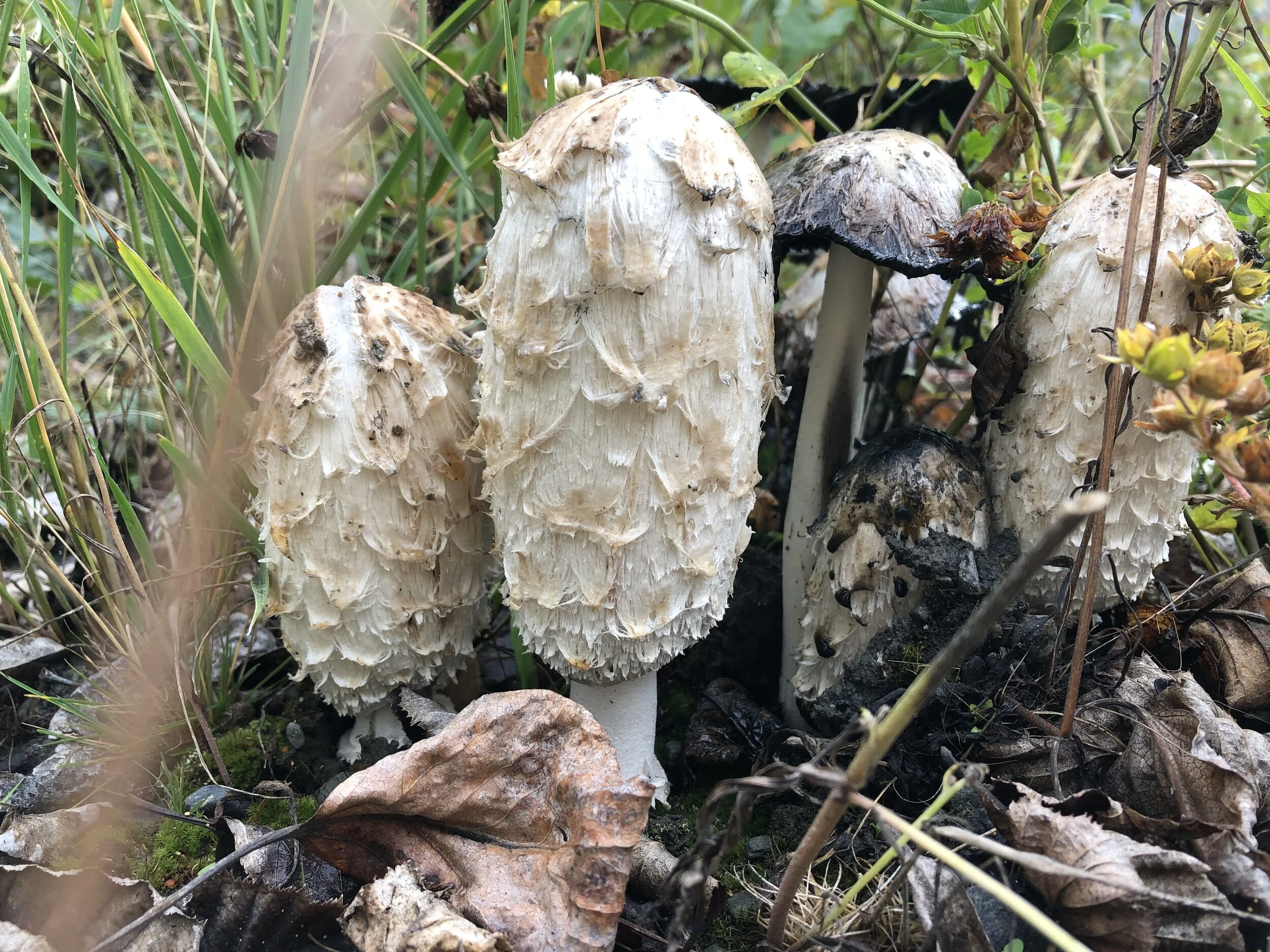Harvesting and Preparing Shaggy Mane Mushrooms
Shaggy Mane Mushrooms. Photo by Allison Sayer.
By Allison Sayer
It’s the time of year when huge patches of shaggy mane mushrooms pop up on the edges of development everywhere. Lawns, gravel pits, and other wide open, semi-developed areas, are great places to find them. I wanted to share a couple of ways I have prepared them recently, along with some harvesting tips.
Shaggy manes go bad extremely quickly. If you pick them in the morning and come back to cook them in the evening, they will likely be too far gone. Interestingly, the whole mushroom eventually dissolves into a puddle of black ink. I have always wanted to experiment with the ink for art, possibly adding a mordant or brushing on paper as-is. I haven’t taken the time to do it yet, but would love to hear advice about it from any readers if they have.
Shaggy manes are still good to eat when they are white on the bottom. Photo by Allison Sayer.
I have heard different arguments about the merits of cutting vs. pulling up mushrooms in terms of which causes less damage to the organism they sprout from. Overall, I haven’t seen definitive proof that either is better. I tend to cut them, because it makes for less dirt in my mushroom bag.
Examine the bottom of each mushroom. If they are starting to go bad, the bottom will be tinged with pink. Eventually they will be black underneath. Sometimes I will cut off the pink or black bottom of the mushroom and keep the top if it is still white.
Shaggy manes should be white on the bottom, if they are this dark underneath, it means they are past their prime and not good to eat. Photo by Allison Sayer.
Immediately cook the mushrooms. They will keep better once they are cooked, so you can cook just the mushrooms when you pick them, and add them to the rest of your recipe later, as long as it's within a day or so. You can also freeze sautéed mushrooms, which I think is generally the best way to preserve them if you have a freezer.
Recently I had good success cutting shaggy manes up, adding a little soy sauce and a chopped zucchini, wrapping the whole package in foil, and placing the packets on the grill.
I also enjoy using the “dry sauté” method, which I learned about from a book by famed mycologist David Arora. In the dry sauté, you add the mushrooms directly to a hot pan with no oil whatsoever. The concept is that oil will seal sogginess into the mushrooms. However, if you cook the liquid out of the mushrooms first you will get a better flavor and texture.
Shaggy mane with a tinge of pink and black at the bottom. This part should be cut off, but the rest of the mushroom can still be eaten. Photo by Allison Sayer.
To dry sauté, watch the hot pan as water visibly bubbles and steams out of the mushrooms. Then, just when the mushrooms are starting to stick to the pan, add oil or butter and some garlic. The mushrooms will be primed to absorb whatever you add and will be quite intense in their own flavor.
Mushrooms will brown better if you leave some space between them in the pan. If you are lucky enough to have a big harvest, you can cook them in batches. Filling a whole pan with mushrooms will lead to a soggier result.
When are you ready to trust yourself to eat mushrooms you identify? Opinions vary, but I would say it helps to ask yourself: “Are you aware of whether there are any poisonous mushrooms that look like the mushroom you are after?”
If you are not sure, you should do some more research before breaking out the butter and garlic.
Once you learn whether there are any lookalikes, learn what would happen if you ate them. Would you get an upset stomach or would you die? What risk are you willing to take? Can you reliably distinguish between this mushroom and others that you shouldn’t eat repeatedly? Try it on a walk with a more experienced friend.
Finally, with new mushrooms, I like to make sure to have two independent sources to confirm my identification. Even seemingly knowledgeable friends can be wrong, so I like to make sure that I get the same answer from consulting both a friend and a printed field guide.
Learn about other ways the forest can feed you with these reads:




